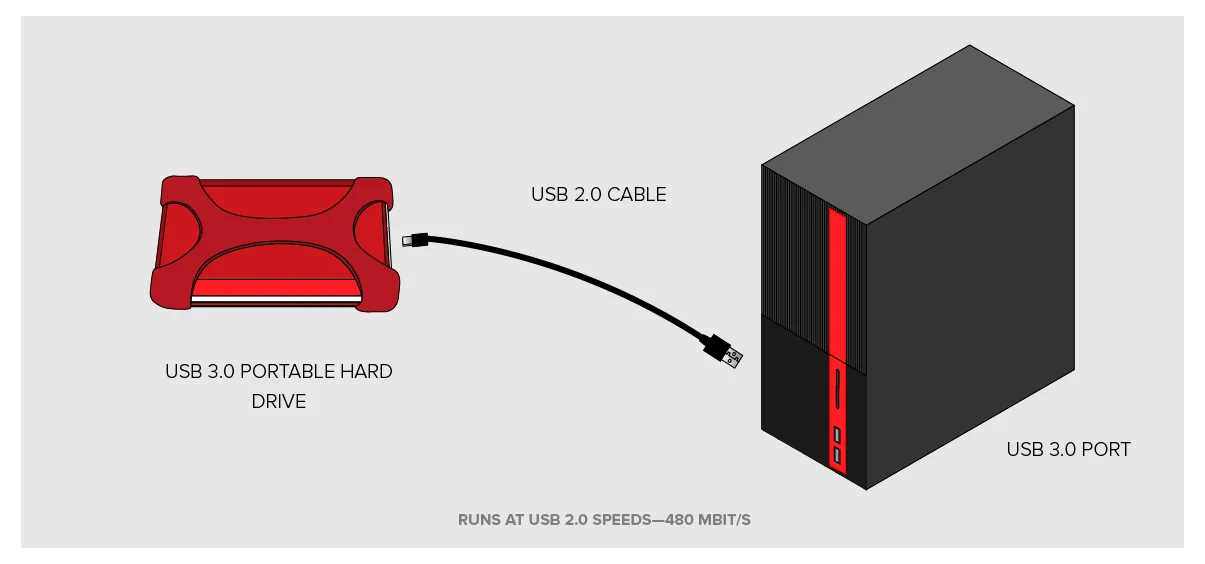How does a USB 3.0 cable work?


USB 3.0 technology has revolutionized the way we transfer data between devices. With its faster speed and improved performance, USB 3.0 cables have become an essential tool for many users. But how exactly does a USB 3.0 cable work? In this article, we will explore the inner workings of USB 3.0 technology, its data transfer capabilities, speed, and compatibility.
USB 3.0 Cable: The Basics
A USB 3.0 cable is a universal serial bus cable that allows for the transfer of data and power between devices. It is an upgraded version of the previous USB 2.0 standard, offering faster data transfer rates and improved power delivery. USB 3.0 cables are backward compatible, meaning they can be used with USB 2.0 and USB 1.1 devices, although at lower speeds.
Understanding USB 3.0 Technology
USB 3.0 technology is based on a set of specifications that define the physical and electrical properties of the cable and its connectors. These specifications ensure that USB 3.0 cables can handle the increased data transfer rates and power requirements of modern devices.
The USB 3.0 cable consists of four shielded pairs of wires: two for data transmission and two for power delivery. The data transmission pairs are twisted to reduce interference and improve signal quality. The power delivery pairs are used to provide power to connected devices, allowing them to operate without the need for an external power source.
Data Transfer Speed
One of the key advantages of USB 3.0 technology is its faster data transfer speed. USB 3.0 cables can transfer data at a rate of up to 5 gigabits per second (Gbps), which is ten times faster than USB 2.0’s maximum speed of 480 megabits per second (Mbps). This increased speed allows for quicker file transfers, faster backups, and smoother multimedia streaming.
To achieve this higher data transfer speed, USB 3.0 cables use additional wires and improved signaling techniques. The extra wires provide separate transmit and receive channels, allowing for simultaneous bi-directional data transfer. The improved signaling techniques reduce signal interference and improve data integrity, resulting in faster and more reliable data transmission.
USB 3.0 Compatibility
USB 3.0 cables are designed to be backward compatible with USB 2.0 and USB 1.1 devices. This means that you can use a USB 3.0 cable with older devices, but the data transfer speed will be limited to the capabilities of the lowest version. For example, if you connect a USB 3.0 cable to a USB 2.0 device, the data transfer speed will be limited to USB 2.0’s maximum speed of 480 Mbps.
To ensure compatibility, USB 3.0 cables and connectors are designed with additional pins and connectors. These additional pins allow USB 3.0 devices to communicate with USB 2.0 and USB 1.1 devices, ensuring seamless connectivity between different generations of USB technology.
Conclusion
USB 3.0 cables have revolutionized the way we transfer data between devices. With their faster data transfer speed and improved performance, USB 3.0 cables have become an essential tool for many users. By understanding the inner workings of USB 3.0 technology, its data transfer capabilities, speed, and compatibility, you can make informed decisions when choosing and using USB 3.0 cables.
In summary, USB 3.0 cables work by utilizing a set of specifications that define their physical and electrical properties. These cables consist of four shielded pairs of wires for data transmission and power delivery. USB 3.0 technology offers faster data transfer speeds of up to 5 Gbps, ten times faster than USB 2.0. USB 3.0 cables are also backward compatible with USB 2.0 and USB 1.1 devices, ensuring compatibility between different generations of USB technology. So, whether you need to transfer large files or connect multiple devices, USB 3.0 cables are the way to go.
Recent Posts
How do I create an engaging and informative online quiz or assessment?
Creating an engaging and informative online quiz or assessment can be a powerful tool for… Read More
What are the most effective methods for managing and reducing work-related stress in the hospitality industry?
Work-related stress is a common issue in the hospitality industry, where employees often face long… Read More
How can I improve my assertiveness and communication skills in a leadership position?
In a leadership position, assertiveness and effective communication skills are crucial for success. Being able… Read More
What are the key elements of a successful employee recognition and rewards program?
Employee recognition and rewards programs play a crucial role in motivating and engaging employees, as… Read More
How do I effectively manage and respond to customer feedback and reviews?
Customer feedback and online reviews play a crucial role in shaping a company's reputation and… Read More
What are the best strategies for effective time management as a stay-at-home parent?
Effective time management is crucial for stay-at-home parents who juggle multiple responsibilities on a daily… Read More
